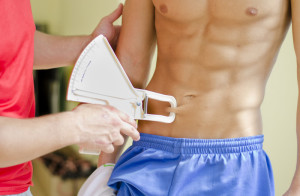Teenagers, Young Adults and Belly Fat (Visceral Fat)
If you missed it, catch up here with Part 2.

Even teenagers and young adults are susceptible to the health risks involved with belly fat. In the last ten years, belly fat among young people has increased by more than fifty percent. That’s an astonishing and rapid rate of increase.
By carrying too much body fat, teenagers can develop Type 2 diabetes and today, doctors are seeing far more cases of this type diabetes in teens than in the past. Even if a teenager with belly fat doesn’t develop diabetes, they increase their risk of serious health complications by the time they reach their forties.
It’s hard enough being a teenager today. Before they reach midlife, teenagers experience all sorts of angst common among people their age. But when belly fat health dangers (visceral fat) become apparent, it works to lower their self-esteem and can rob them of what should be some of the most wonderful and constructive times in their lives.
“I’m a Thin Person, So I Don’t Have to Worry about Belly Fat!”
Wrong. You aren’t immune to the destruction belly fat can cause in your body.
Watch this video about how to reduce Visceral Fat (aka belly fat). It could save your life.
Being thin doesn’t exclude a person from carrying around dangerous visceral fat. Researchers are now beginning to realize that visceral fat doesn’t discriminate against any body type.
While it’s not as obvious in a thin person as it is in people whose bellies stick out noticeably, it’s just as bad, if not more so because of the way society assumes thinner people automatically have a healthy fat level.
It’s this kind of thinking that leads to undiagnosed or overlooked risks for slender people.
If you don’t have belly fat to the point where it’s able to be seen, then how can you tell if you need to be concerned about visceral fat? There are tests that can tell you how much of your body is composed of this type of fat.
The Outside Fat vs the Inside Fat
Even if we put all health issues and concerns aside, if we take them off the table and by some wave of a wand could say that belly fat didn’t cause any harm to the body at all, there’s still the visual appeal. Or in the case of belly fat, the visual non-appeal.
When our belly sticks out over the waistband of our jeans, there’s nothing attractive about that to others and while it shouldn’t be the case, the truth is, we are judged by our appearance.
We’re judged in social settings among our peers, in the workplace with colleagues and if job hunting, people with larger bellies are hired less often than those who are physically more attractive and fit looking.
There are also studies proving that fit people get promoted more often than their heavier co-workers. I know what you are going to say, no, it’s not fair, and it’s not right (not to mention illegal), but it’s the way society is.
Worse than the unattractive picture a protruding belly presents to anyone else in our circle, is the way it can make us see ourselves. We feel ugly inside based on what the mirror tells us on the outside.
Our inner critic has a field day when we look at ourselves in a full-length mirror, standing sideways with our belly front and centre. When we try on clothes and have to go the BBC route (buy bigger clothes) it can make us feel discouraged or disgusted with how our belly looks. This is not only bad for our self-esteem but can also lead to depression and other health related problems.
Have you tried to find clothes that flatter a body when you have a larger belly? They’re not attractive either.
That disgust or discouragement we feel when trying to find clothes can lead to more overeating, which can lead to beating ourselves up emotionally even more, which leads to overeating….get the picture?
It becomes a vicious cycle, but it doesn’t have to be a cycle that we can’t break.
How Much Fat Is Too Much?

You can gauge how much is too much simply by using a measuring tape around the centre of your belly. As a rule of thumb guide, for a man, if your belly measures over 101 cm or forty inches then it’s too much fat for you to be carrying around. Time for you to make a few changes to your lifestyle.
If you are a woman and your belly measures greater than 89 cm or thirty-five inches, it’s high time to do something about it.
But as I said, this is only a guide and it is the top end of the scale (in other words, you are a borderline case) so you need to use a little common sense. For example, if I were 101 cms around the waist I would be miles too fat. The best way to find out is to get your personal trainer, or doctor, to do a body fat percentage measurement and then you will have some proper figures to work with.
Whether you’re a man, woman, thin person or obese, baby boomer or teen, belly fat (visceral fat) isn’t safe to have hanging around.
Do something about it.
Don’t procrastinate.
Your life and your loved ones are far too important for you not to make some changes.
Unfortunately there is only one unpalatable answer: “Suffer the pain of discipline or suffer the pain of regret.”
For some more highly recommended reading on the grave dangers of visceral fat have a look at this excellent article by Rosemary Marchese, Founder & Managing Editor @ The Fit Busy Mum, Fitness Writer, Speaker and Physiotherapist, that I came across recently. It is titled “Do you really need to lose weight at all? The ‘perfect’ weight lie!” and is a very engaging and entertaining article.
Like and share if you think this may help a friend or a loved one.
Cheers – John.
[…] Continue reading Part 3. […]